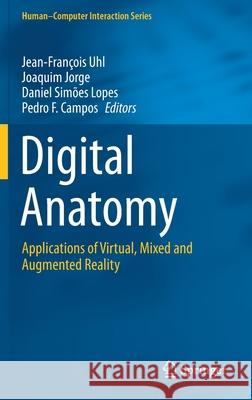Digital Anatomy: Applications of Virtual, Mixed and Augmented Reality » książka
topmenu
Digital Anatomy: Applications of Virtual, Mixed and Augmented Reality
ISBN-13: 9783030619046 / Angielski / Twarda / 2021 / 385 str.
Digital Anatomy: Applications of Virtual, Mixed and Augmented Reality
ISBN-13: 9783030619046 / Angielski / Twarda / 2021 / 385 str.
cena 645,58 zł
(netto: 614,84 VAT: 5%)
Najniższa cena z 30 dni: 616,85 zł
(netto: 614,84 VAT: 5%)
Najniższa cena z 30 dni: 616,85 zł
Termin realizacji zamówienia:
ok. 22 dni roboczych
Bez gwarancji dostawy przed świętami
ok. 22 dni roboczych
Bez gwarancji dostawy przed świętami
Darmowa dostawa!
Kategorie:
Kategorie BISAC:
Wydawca:
Springer
Seria wydawnicza:
Język:
Angielski
ISBN-13:
9783030619046
Rok wydania:
2021
Wydanie:
2021
Numer serii:
000303886
Ilość stron:
385
Waga:
0.73 kg
Wymiary:
23.39 x 15.6 x 2.24
Oprawa:
Twarda
Wolumenów:
01
Dodatkowe informacje:
Wydanie ilustrowane











